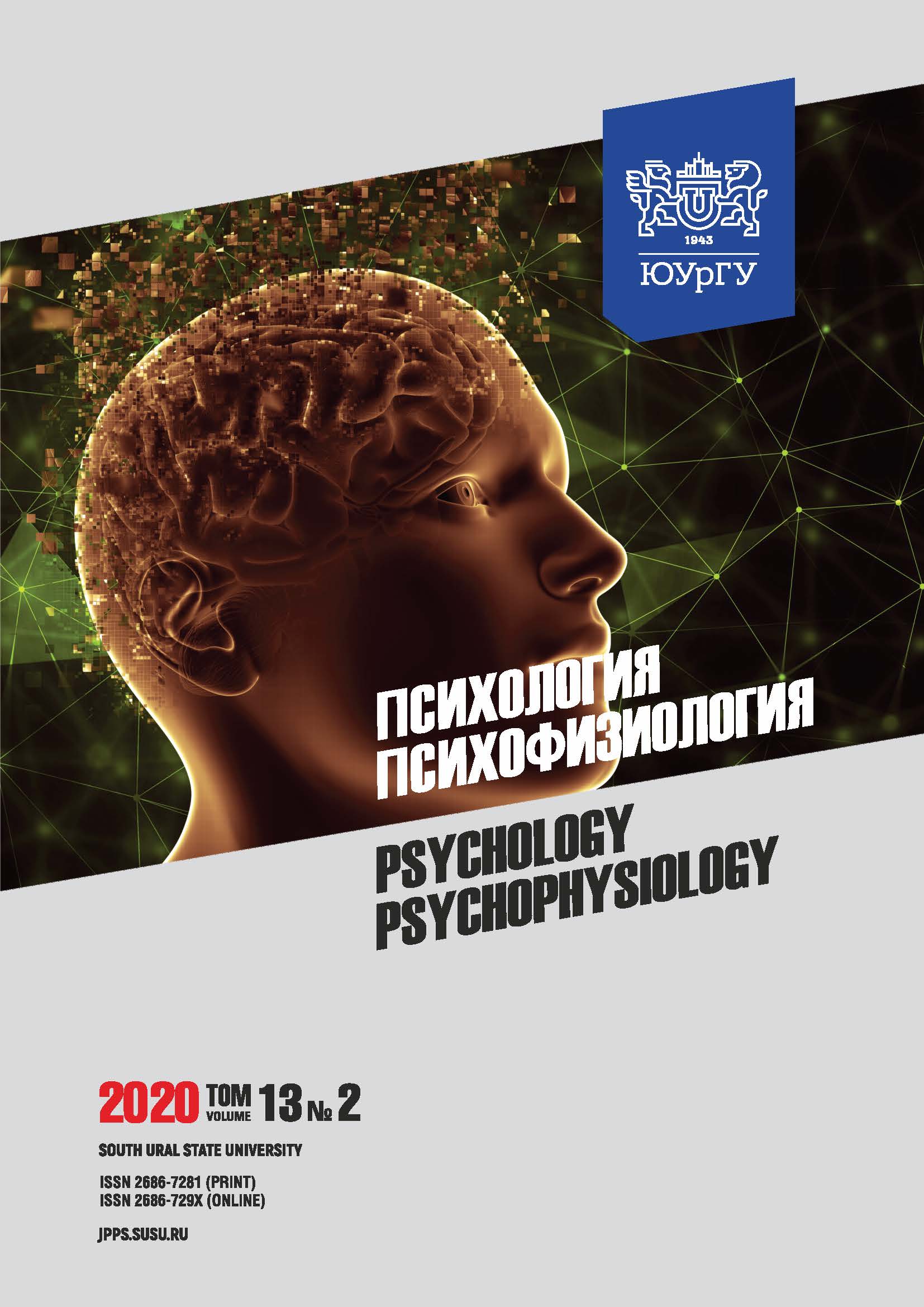FEATURES OF THE DEVELOPMENT OF VISUAL FATIGUE IN PERSONS WITH HEALTH DISORDERS
Abstract
Background. The article discusses the qualitative and quantitative features of visual fatigue that persons of different nosological groups may experience. Visual fatigue is one of the factors in deterioration of the psychophysical status of both respondents with psychophysical impairments from the experimental group and relatively healthy individuals from the control group. Aim. The paper aims to study the features of the development of visual fatigue in people with different types of psychophysical disorders and different levels of health. Materials and method. During the study, the following methods were used: observation, self-assessment of the psychophysical status by respondents, and a survey. Results. The results of the study showed that respondents with impaired health and a relatively healthy people had different reasons for the development of visual fatigue and the manifestation of mental responses to intense visual stimuli. Therefore, the emergence and development of visual fatigue can depend both on the mental status of a person and on physical factors that reduce the adaptive capabilities of sensory systems and lead to negative mental responses and health deterioration. Two groups of respondents with a mental and organic basis for visual fatigue were identified. Some respondents showed that they had high levels of visual adaptation and resistance to visual fatigue. They use effective strategies for sensory discharge which can be applied to other groups distinguished by physical and mental symptoms of visual fatigue. Conclusion. The results can be used in the development and application of methods for the psychological and pedagogical support of persons with health problems and are aimed at reducing visual fatigue among participants in inclusive education.
Downloads
References
2. Evseev A.V. [The effectiveness of recreational activities with visual fatigue.] Zdravoohranenie, obrazovanie i bezopasnost. [Health, education and security], 2018, no. 1, pp. 88–98. (in Russ.).
3. Kustov I.A., Orishko I.G., Kopteva E.E., Avdyushenko S.A. [The use of methods of short-term sensory deprivation to correct the functional state of the body of military personnel]. Izvestiya Rossijskoj voenno-medicinskoj akademii. [Proceedings of the Russian Military Medical Academy], 2019, no. 3, pp. 147–151. (in Russ.).
4. Matyukhin V.V., Shardakova E.F., Yampolskaya E.G., Elizarova V.V. [Justification of physio-logical and ergonomic measures to reduce the development of visual fatigue when working with video display terminals]. Analiz riska zdorovyu. [Health risk analysis], 2017, no. 3, pp. 66–75. DOI: 10.21668/health.risk/2017.3.08 (in Russ.).
5. Nikolaeva E.I. Psihologicheskaya fiziologiya s osnovami fiziologicheskoj psihologii [Psychological physiology with the basics of physiological psychology]. Moscow, PERSE, 2008. 147 p. (in Russ.).
6. Ovechkin I.G., Pershin K.B., Antonyuk, V.D. Funkcionalnaya korrekciya zreniya. [Functional vision correction]. St. Petersburg, ASP, 2003. 96 p. (in Russ.).
7. Proskurina O.V., Tarutta E.P., Iomdina E.N. et al. [Actual classification of asthenopia: clinical forms and stages.] Rossijskij oftalmologicheskij zhurnal. [Russian Ophthalmological Journal.], 2006, no. 4, pp. 69–73. DOI: 10.21516/2072-0076-2016-9-4-69-73 (in Russ.).
8. Rabichev I.E., Kotov A.V. [Motivation for self-control of increasing visual acuity with visual fatigue and accommodation spasm]. Akademicheskij zhurnal Zapadnoj Sibiri [Academic Journal of Western Siberia], 2017, no. 1, pp. 77–79. (in Russ.).
9. Rosenblatt V.V. Problemy utomleniya [Fatigue problems]. Moscow, Medicine, 1975. 240 p. (in Russ.).
10. Halfina R.R. [Psychophysiological features of increasing visual performance in case of visual fatigue in PC users]. Vestnik psihofiziologii. [Bulletin of Psychophysiology], 2018, no. 1, pp. 123–125 (in Russ.).
11. Halfina R.R., Emeleva T.F., Halfin R.M. [Psychophysiological indicators of processing visual information in case of visual fatigue]. Elektronnyj zhurnal "Vestnik Novosibirskogo gosudarstvennogo pedagogicheskogo universiteta" [Electronic journal "Bulletin of the Novosibirsk State Pedagogical University"], 2012, no. 3. pp. 80–85. (in Russ.).
12. Shuvalova I.N. [A pedagogical experiment to reduce the fatigue of the visual analyzer in students during training sessions]. Gumanitarnye nauki [Humanities], 2019, no. 1 (45), pp. 90–95. (in Russ.).
13. Benedetto S., Drai-Zerbib V., Pedrotti M., Tissier G., Baccino T. E-Readers and Visual Fatigue. PLoS ONE, 2013, vol. 8, is. 12, pp. 1–7.
14. Kluckow S.W., Rehbein J.G., Schwab M., Witte O.W., Bublak P. What you get from what you see: parametric assessment of visual processing capacity in multiple sclerosis and its relation to cognitive fatigue. Cortex: journal devoted to study of the nervous system and behavior, 2016, vol. 83, pp.167–180.
15. Li J., Miao D., Song G. Effect of mental fatigue on nonattention: a visual mismatch negativity study. Neuroreport, 2016, no. 18, pp. 1323–1330.
16. Majerova H. The person in a situation of visual impairment and its perception and imagination from the qualitative viewpoint. Procedia – Social and Behavioral Sciences, 2017, vol. 237, pp. 751–757. DOI: 10.1016/j.sbspro.2017.02.117
17. Muramatsu K., Watanuki K., Mashiko N., Watanabe Y., Tasaki M. Development of an LED Lighting System Through Evaluation of Legibility and Visual Fatigue. Emotional Engineering, 2020, vol. 8, pp. 229–240.
References on translit
Copyright (c) 2020 Psychology. Psychophysiology

This work is licensed under a Creative Commons Attribution-NonCommercial-NoDerivatives 4.0 International License.



